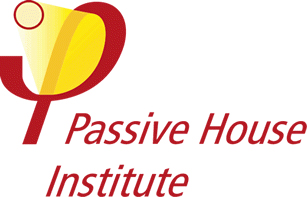The Impact Passive Housing Has on the Environment
Passive housing has become an extraordinarily popular style of environmentalism that many are utilizing in their newest construction projects. This type of housing follows simple rules that guide construction to create a space that requires very little energy to heat or cool and is generally inexpensive to build or maintain.
Reducing the building’s ecological footprint is the main goal, but it can do much more for homeowners than be green. Here’s the impact passive housing has on the environment and why it’s a hot conversation in housing right now.
What Is Passive Housing?
Although passive housing is gaining a lot of traction now, it’s a nearly fifty-year-old concept. First discussed in 1973, this type of housing became a popular idea after the oil embargo of the time. This crisis caused many scrambles to find a different way to create more energy-efficient and inexpensive housing to develop, and passive housing was born.
Why It’s Popular
Passive housing is still growing in popularity, with more people being introduced to the idea every day. People are so interested in this style of house framing and energy efficiency because of the amount of news concerning environmentalism in recent years. As a result, people want to do whatever they can to help, which means reconsidering even the most basic parts of our lives.
How Common Is It?
The Passive Housing Instituted of the US (also known as PHIUS) has certified over 1,200 projects, 1.1 million square feet, since 2015. Although this doesn’t mean that those are the only projects that are energy efficient and that follow the rules of passive housing, it does mean that the numbers are quickly growing. In addition, homes that have been marked as PHIUS certified are higher in value and stay on the market for a shorter period of time.
What Benefits Does Passive Housing Have for the Environment
Passive housing is, by nature, fantastic for the environment. Allowing low energy use by ensuring the home is perfectly insulated, ensures that there will be less chemical pollution than the average home.
The machinery like air conditioning that usually makes a lot of noise also helps reduce passive homes’ noise pollution ratings, since these devices turn on less often and therefore have less of an impact.
Although there’s no home that is entirely pollution-free, passive homes get close.
What Benefits Can Passive Housing Have for the Homeowner?
Although the environmental benefits are huge, they’re not the only thing that passive housing is good for. The home we live in can affect larger parts of our lives than many realize! These are what this type of housing can offer anyone.
Social Benefits
There is a social benefit that comes from having an environmentally friendly home. Having bamboo plywood vanities doesn’t make anyone better than anyone else, but it increases how people perceive you. Owners are recognized as forward-thinking and environmentally intelligent.
Financial Benefits
Owning a PHIUS-certified home has a lot of financial benefits! Not only can these be inexpensive to build, but you also have the chance to save a lot of money on your energy costs. In addition, since their energy efficiency is built-in, you never have to worry about accidentally leaving the heating or cooling on.
Mental and Physical Health Benefits for Owners
Keeping contaminants out of your home while knowing that you’re doing good for the world around you is a great way to improve anyone’s mood and health. There are still studies being conducted to understand the full scope of what effects passive housing has on us, but so far, everything is positive.
What’s the Best Way to Achieve This?
This type of housing may sound incredibly expensive, but it’s not as bad as you may assume! You can create your version of passive housing on a budget, but you should ensure that you heavily research each step to ensure you’re making the best decision for both yourself and the environment.
- Insulation can help a home be more passive by ensuring that the temperature you want inside is stuck there.
- Reduce thermal bridging, so heat stays inside the home when wanted or stays out. This can be achieved in multiple ways, including energy-efficient windows such as window replacement inserts, airtight construction, and tight ventilation.
- Energy-efficient materials will help ensure that your home is efficient every step of the way.
Important Things to Keep in Mind
This is a lifestyle change that you should take your time getting used to. Although it’s fantastic for the environment and wonderful for your bottom line with how much money you’ll save on electricity and other bills: it’s good to remember that every small change or update can make a difference.
Using thought leadership to guide others and show them how good this is for the environment and yourself, you can help others decide if this is a lifestyle they want for themselves. Unfortunately, there’s no inexpensive housing anymore, so it’s okay to admit that this can be pricey to build, but you’ll save an incredible amount of money through lower energy consumption.
Passive Housing Isn’t Impossible
Passive housing may sound complicated when you first learn about it, but it’s a very flexible and constantly evolving style of construction and living. Your home doesn’t have to be certified by PHIUS to be energy efficient and green-minded, just put in the time and work, and you’ll make changes that will affect the entire world around you.
Max Shafer is a contributor to the Innovative Building Materials blog. He is a content writer for the construction and home improvement industries with an interest in landscaping, outdoor remodeling, and interior design. Max is focused on educating homeowners, contractors, and architects on innovative materials and methods of construction that increase property value, improve sustainability, and create a warm and welcoming ambiance.

























